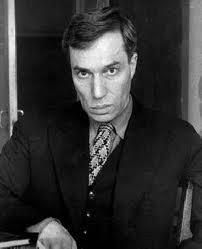“February” is one of the first famous poems of the famous poet. Unusually short, concise, capacious, as if chased, it is striking at the same time with its versatility and beauty.
The analysis of Pasternak’s poem is difficult precisely because of the many-sided nature of the work, deliberate simplicity and internal harmony and complexity. It was written back in 1912 and very soon, as early as the next year, it was printed in a poetry collection entitled “Lyrics”, which became the poet's first printed speech. Already in the forties, he wrote a new version of this work, but then he returned nevertheless to the original.
No matter how simply Pasternak himself wrote, the analysis of the poem is difficult for posterity. His theme seems to be clear. But then everything gets confused. It seems to be February, then what kind of rain are we talking about? The thing is that all these are expressions inherent in symbolism. As a friend of the poet and literary historian Konstantin Loks wrote, Pasternak’s work is a new reality, another dimension in which the perception and mood of the spiritual world merges with the real world existing around a person. And then everything falls into place.

When analyzing Pasternak’s poem “February”, it is with this approach that you need to act: through the conditional reality of the soul and its perception by the poet himself go to the images, each of which more resembles a capacious and colorful symbol. All of Pasternak's early poems are, above all, a picture of the soul, its torment, experiences and aspirations. Sadness, separation, sadness ... All this is not a phenomenon of nature, but a throwing of the soul. The very first word in the poem, before the point, is a peculiar theme of the whole work. February. A simple, short word, like a beat of the heart, a weak push that will push the whole avalanche from the mountain.
By analyzing Pasternak’s poem, the reader gradually begins to realize that he’s moving not in space, but rather in time. After all, we are talking about February. Then why the "black spring" and the downpour? After all, it is more likely to be March, if not April. And later on, an understanding of the author’s intention is emerging. The beginning of the poem is a kind of wandering, a journey from winter to the coming spring. Then the pace accelerates, a whole network of events flies through until the last quatrain comes in, monotonous and uniform, smoothly returning the reader to the very beginning.

An analysis of Pasternak's poem also reveals the peculiarities of the rhythmic construction of the poem, which is more reminiscent of a bell. It either buzzes steadily and low, then trembles quickly and gently. In the figurative series of the poem, sound plays a very important role. It is he, and not visual images, that dominates the poem. The rumble, rattling, noisy, deafening cacophony cause vague alarm, a sense of confusion, and are combined with the emotional throwing of the poet himself.
Spring mood, awakening, desire to write, create - this is what clearer the analysis of Pasternak's poem. And although the birth of new poems is painful, intense, the poet seeks to overcome all obstacles and in the poem deliberately speeds up time, striving for the finale. Hence the click of the wheels, the rainfall waterfall, noisy flocks of rooks. All this roar as if leaning on the poet, trying to crush, extinguish the fire in his soul.